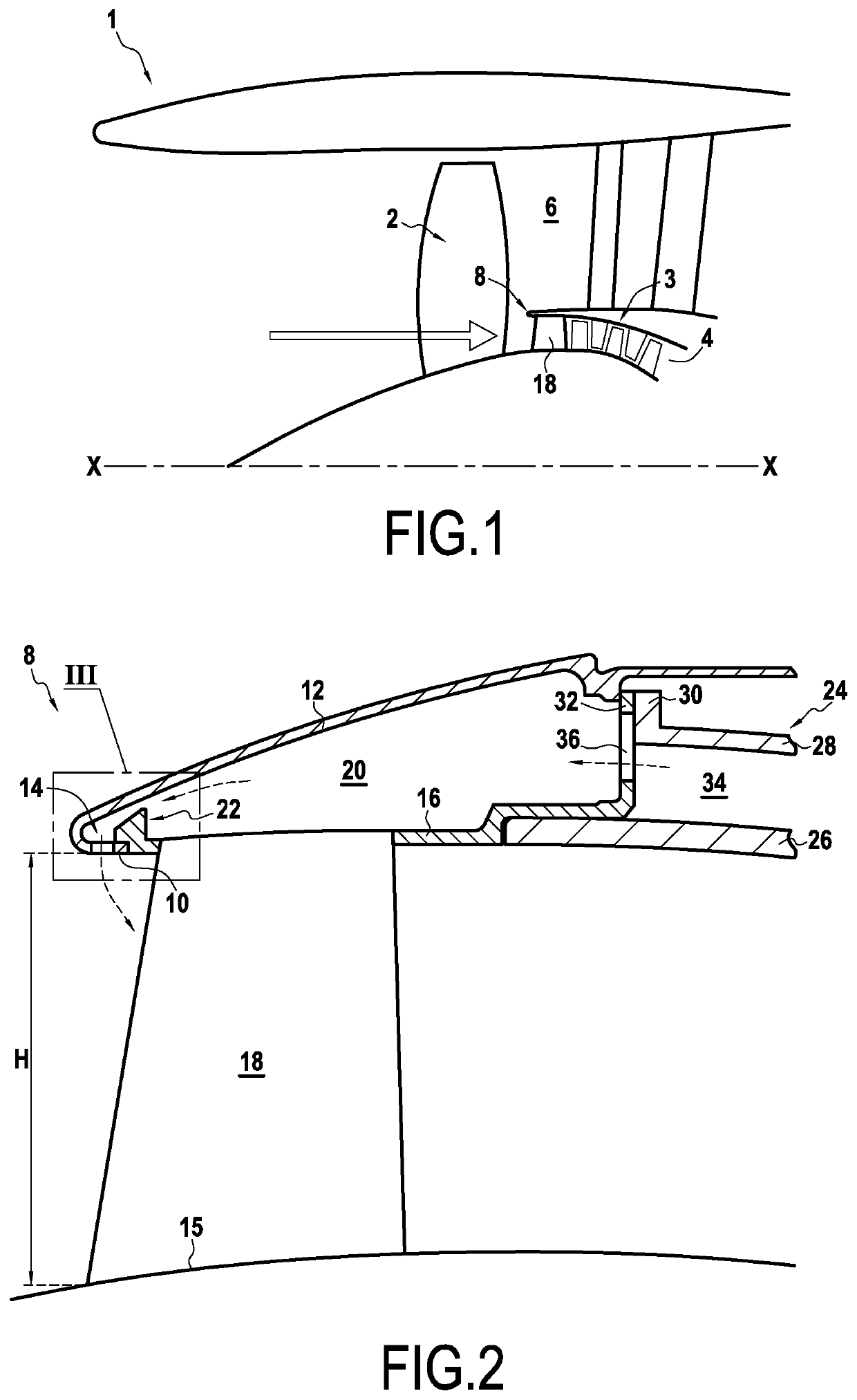Device for deicing a splitter nose and inlet guide vanes of an aviation turbine engine
a technology which is applied in the field of splitter nose and guide vanes system for aviation turbine engines, can solve the problems of blockage of ice being ingested, combustion chamber flaming out, and partially or totally blocking the primary passage, so as to improve the effect of deicing
- Summary
- Abstract
- Description
- Claims
- Application Information
AI Technical Summary
Benefits of technology
Problems solved by technology
Method used
Image
Examples
Embodiment Construction
[0028]FIG. 1 shows part of an aviation turbine engine 1 of the two-spool bypass type to which the invention can be applied.
[0029]In known manner, the turbine engine 1 is axisymmetric about a longitudinal axis X-X and has an inlet at its upstream end that receives outside air, this air feeding a fan 2. Downstream from the fan 2, the air is split between a flow passage (or channel) 4 for a primary stream (or hot stream) and a flow passage 6 for a secondary stream (or cold stream). The flows in these two passages 4 and 6 are split apart from each other at the passage inlets by a splitter nose 8. Once air has entered into the primary stream flow passage 4, it then passes through a low-pressure compressor 3 (or “booster”), a high-pressure compressor, a combustion chamber, and turbines (which elements are not shown in the figures), prior to being ejected to the outside of the engine.
[0030]As shown in FIGS. 2 and 3, the splitter nose 8 has a longitudinal section at its upstream edge that i...
PUM
 Login to View More
Login to View More Abstract
Description
Claims
Application Information
 Login to View More
Login to View More - R&D
- Intellectual Property
- Life Sciences
- Materials
- Tech Scout
- Unparalleled Data Quality
- Higher Quality Content
- 60% Fewer Hallucinations
Browse by: Latest US Patents, China's latest patents, Technical Efficacy Thesaurus, Application Domain, Technology Topic, Popular Technical Reports.
© 2025 PatSnap. All rights reserved.Legal|Privacy policy|Modern Slavery Act Transparency Statement|Sitemap|About US| Contact US: help@patsnap.com


